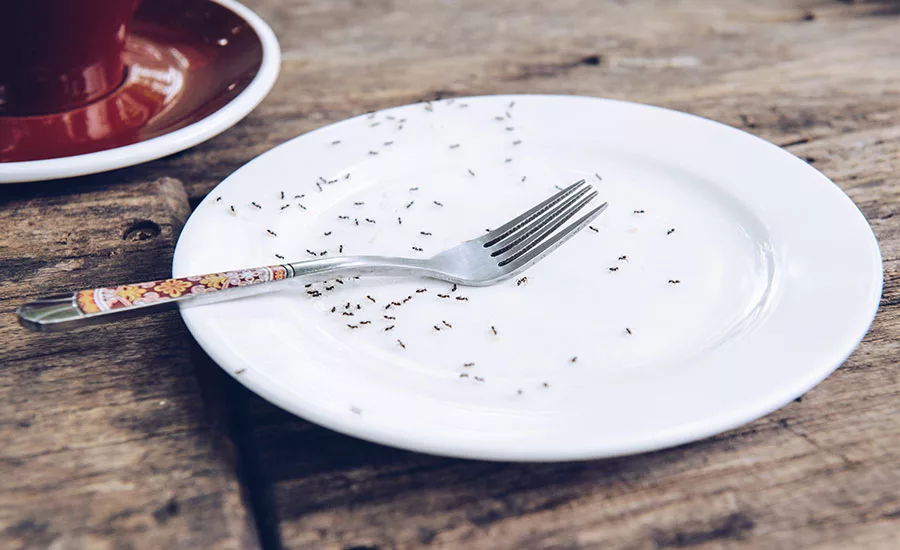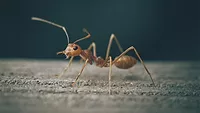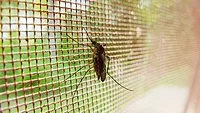Common Pest Hot Spots in Restaurants and How to Eliminate Them

Pests are a significant source of concern for restaurants because they threaten food safety, carry disease-causing pathogens, cause damage to building structures, and create an unsanitary environment. Because of their high breeding potential, their colonization in foodservice establishments is detrimental to safe and sustainable operations. Pests look for safe havens where they can feed, nest, and breed without being disturbed, and restaurants are one such haven. Having found a safe refuge, they grow in number to the point where they pose a threat to food safety. To keep restaurants pest-free, it is important to keep pests out in the first place, and this can be accomplished by identifying and eliminating conditions that harbor pests. They can enter the restaurant through many points, and once inside, they contaminate food and spread disease-causing organisms.
In this article, we'll talk about common pest hot spots—areas where you can expect to find pests as well as the entry points that pest use to enter. We will also discuss strategies to eliminate pest hot spots. Knowing where the hot spots are and taking preventative actions will lower the likelihood of infestation greatly.
Let’s get started.
Exterior Surroundings
Unsanitary conditions around the restaurant such as clutter, debris, bushes, and stagnant water encourage pests to take up residence. Pest infestations usually start on the outside of the restaurant before getting inside, and it is obvious that the more pests there are on the outside, the more likely they are to find their way inside. Keep the areas surrounding the restaurant clean and free of standing water and dense vegetation as this is where pests congregate before making their way to the restaurant. Remember that cleaning the restaurant's exterior and surrounding areas on a daily basis is essential to keep the environment clutter-free and pest-free. If pests are being introduced into the restaurant from neighboring properties, contact the neighbor and work together to solve the problem. Plants are also attractive to pests, so plant trees at least 8 to 15 feet away and shrubs at least 3 feet away from the restaurant building. Examine the building structure to determine if it is a potential pest harborage point, and if so, perform restoration or structural maintenance to eliminate the risk of pest infestation. Another effective method for keeping pests out of the restaurant, particularly rodents is to place gravel strips near building walls and structures.
Outdoor Lighting
Outdoor lighting that is not well-planned can attract pests to the restaurant. It is best to consult a lighting contractor to determine the location, color, adequacy, and illuminance levels as these factors play an important role in controlling pests. Incandescent bulbs are a poor choice for outdoor lighting because they produce heat. The more heat a light produces, the more pests it attracts, particularly night-flying insects. UV-free LED lighting and sodium vapor lighting are better than mercury lighting because they are less appealing to pests. Another critical aspect of pest control is the placement of exterior lighting. Avoid mounting lights directly above the main entrance door, as this will draw pest to the main door. Warm-colored LED lighting with a yellow or orange hue is less tempting to pests than cool blue lighting because insects are drawn to three light wavelengths: green, blue, and UV. Don’t forget to turn off the exterior lights before leaving for the night, as this will keep flying insects from congregating around the lights.
Roofs
Roof can provide a safe haven for pests if not properly planned and maintained. Dust or grime buildup in roof and ceiling cavities provides an ideal environment for rodents, fleas, and nesting birds to hide and breed. Keep the roof clean and inspect it at least twice a year to ensure that there is no structural damage (for instance, after a weather storm or repair work) that could provide a favorable environment to pests. Consider installing a membrane roof rather than a pitch and gravel roof because it is easier to clean and does not have cavities where pests can hide. Flat roofs have various advantages, but they also have some drawbacks. They do not drain well, deteriorate over time, and are more susceptible to pest infestation. They have low spots that allow water to pool. This causes damage to floor membranes, which can result in water leaks and pest infestations. Hiring a roof cleaning professional is a sensible idea for more than just cleaning and maintaining. They may also assist in evicting pests and installing preventative measures if there is an infestation.
Doors and Windows
Improperly sealed doors are potential pest entry points. If the door doesn’t close tightly and has gaps, as seen with poorly installed doors, pests such as rodents and crawling insects can sneak into the restaurant. To restrict pest entry through the door, install door threshold to close the gap at the bottom of the door and use weather stripping to seal gaps on the sides and top of the door. Fill cracks and holes in doors and door panels with a caulking material before pests get into them. Pests are frequently seen entering restaurants through doorways, so keep the doors at the front and back entrances closed when not in use. Installing self-closing doors is a good choice because they help prevent doors from being left open. Air curtains, which create a strong turbulence, are also effective in keeping pests from entering through doors. Windows are another entry point that pests love. Check that windows close properly and there are no gaps, holes, or cracks that allow pests to enter. Replace broken window panes because pest can get in through these openings. Install tight-fitting fly mesh to keep flies out, especially during the warmer months when pests are most active. Most importantly, remember to close windows when leaving for the night.
False Ceilings
False ceilings enhance the appearance of the ceiling but have their own set of dangers. Pests such as rodents, cockroaches, and flies often hide in the space between the roof and the false ceiling. Once rodents take up residence there, they cause damage to electrical wires and building structures and create an unsanitary environment. Clean gaps in false ceilings using a vacuum on a regular basis to remove debris and pest feces, which attracts new pests. Keeping false ceilings in sanitary condition can be time-consuming and difficult and examining them for pests, leaks, or cracks can be even more difficult. Hence, false ceilings should be avoided in the first place. Installing rodent sensors in false ceilings is a feasible option because it will assist exterminators in tracking rodent activity and trapping them during their most active times.
Looking for quick answers on food safety topics?
Try Ask FSM, our new smart AI search tool.
Ask FSM →
Air Ducts
The build-up of dust and debris in air vents over time attract unwanted pests. Dust-laden air vents not only degrade indoor air quality but also provide a hospitable environment for pests. To keep HVAC system in sanitary condition, hire an HVAC company for cleaning and maintenance, which include cleaning air vents and changing air filters. For pests such as rodents and flying insects, ducts are an easy entry point. Seal unwanted gaps, openings, or cracks in ducts and remove standing water around the air vent unit to eliminate the possibility of pest ingress. Install fly mesh screens on air vents to prevent flying insects from getting into the HVAC system. During routine pest control treatment, ask exterminators to inspect the ducting systems for pest presence. The sooner a pest infestation is identified, the sooner it can be resolved.
Incoming Supplies
Incoming supplies and delivery vehicles can potentially be a source of pests. In order to prevent pests from getting introduced into the restaurant, properly inspect incoming supplies and delivery vehicles for pests. Clearly define inspection standards and train employees to inspect pallets, crates, and boxes for signs of pests such as droppings and product damage. If any pest activity is detected, reject and isolate compromised items to prevent pests from spreading to other materials. It is equally important to receive food supplies in areas that are clean and well lighted and at times that allow for proper inspection.
Cooking Equipment
Poor cleanability of the equipment may cause dirt, dust, and food debris to accumulate in the nooks and crevices, as such buildup could attract pests. Experts recommend investing in National Sanitation Foundation-certified equipment because it is designed with sanitary design standards in mind, that is, equipment can be easily cleaned to a microbiological level, is made of food-grade materials, and allows for easy assembly and disassembly for cleaning and inspection. When it comes to cleaning, there are several areas in the kitchen that are frequently overlooked, one of which is underneath the cooking equipment. The fact that the equipment has limited cleaning access is the main reason why these areas go unnoticed. Pests are drawn to dirt and food debris that build up underneath the cooking equipment. Install floor-mounted cooking equipment on at least six-inch-high legs sealed to a masonry base and table-top equipment on at least four-inch-high legs sealed to the countertop for easier cleaning. Check that all equipment is clean on the inside and outside before leaving for the night. When equipment is easily cleanable, it is easier to keep it sanitary and the equipment is less likely to be infested with pests.
Water Pooling on Floors
Pooling of water on floors is a common sight in restaurant kitchens. Pests such as mosquitoes and cockroaches breed in standing water on floors. To prevent water from accumulating on the floor, slope the floor towards the drain, allowing water to drain freely and efficiently.
Drainage and Floor Intersections
Food debris accumulation in drains and floor intersections in the kitchen is an obvious pest hot spot that acts as an open invitation for pests such as rodents, cockroaches, and flies. Pests frequently congregate in areas where there is a buildup of water and food debris. The most commonly recommended solution to keep food debris from accumulating is to cover junctions between floors and drains. As far as drains are concerned, certain drains allow food debris to accumulate, increasing the risk of infestation. Circular and catch basket drains are superior to trench drains because they do not allow for any of such accumulation.
Gas Stoves
Grease, grime, and charred bits of food that accumulate on the sides of gas stoves act as a magnet for pests especially cockroaches. Such deposits can become fairly hard to remove over time. Wipe off stove-top surfaces, frames, and burner grates with a damp cloth and scrub with a sponge and soapy water on a daily basis. Remember to clean them thoroughly once a week to keep them in pristine condition. This will not only keep gas stoves running longer but will also keep pests away.
Wall-Mounted Electrical Fixtures
One of the most common hiding places for pests is behind and between wall-mounted electrical fixtures such as switch board panels and wall lights. To reduce the infestation risk, install fixtures in a way that allows enough space for cleaning and inspection.
Cracks or Crevices on Walls and Floors
Cracks, crevices, or damaged tiles on walls and floors are excellent site for pests to hide. Remove dust, dirt, and food particles from cracks, crevices, and holes using a vacuum before sealing them with a filler compound. If there are substantial damages to the walls and floors, seek professional help.
Plumbing Leaks
Plumbing leaks are one of the most common causes of pest infestations. If left untreated, leaks will cause water to pool, leading to a variety of problems ranging from full-blown pest infestation to mold and mildew growth. Pests such as cockroaches, mosquitoes, and ants frequently congregate and breed in and around pooling water. One of the simplest ways to reduce the risk of pest infestation is to regularly inspect plumbing fixtures such as faucets, pipes, sprinkler heads, and toilet tanks for leaks and make sure there are no clogged floor drains or standing water anywhere in the restaurant.
Dirty Dishes Left Overnight
Pests are attracted to dirty dishes left in the sink. Cockroaches and rodents feed on leftovers on soiled dishes. The most basic solution to this problem is to wash all soiled dishes and utensils as soon as possible and store them in cupboards and shelves before leaving for the night.
Presence of Clutter in Food Storage Areas
Clutter and pests are inextricably linked. Pests enjoy clutter because it provides an excellent place to hide and gives them everything they need to survive. The more cluttered the environment, the easier it is for pests to find a suitable hiding place. To prevent pest infestations and maintain a sanitary environment, remove all debris from the food storage areas regularly like cardboards, food scraps, and dirty containers. Use the first-in-first-out method to maintain stocks of food items because the longer the food products sit in the storage area, the greater the chance of pest infestation. Store food products 6 inches off the ground and 18 inches away from walls for better cleaning access. To eliminate the risk of pantry pests such as Indian meal moths, earwigs and grain beetles, store food products neatly and in airtight containers. It is also important to inspect storage areas for pests on a regular basis and schedule routine pest treatment for food storage areas to prevent infestation.
Food Left Overnight in Open Containers
Leaving food out overnight in the open is a risky behavior that could invite rodents and cockroaches. Always keep food in the refrigerator or in clean, airtight containers. Food that has been partially eaten or contaminated by pests should never be used. Discard it even if it appears pest-free.
Crumbs and Spills on Floors
Cockroaches and ants are attracted to even the smallest amounts of food spills. Cleaning up crumbs and spills as soon as they form is an excellent practice to keep pests at bay.
Overflowing Trash Cans
Overflowing trash cans and dumpsters, which are common in restaurants, are a known breeding ground for pests. To keep the environment less appealing to pests, empty garbage cans in the kitchen and dining areas after each meal period or whenever necessary. Never leave trash outside the dumpster and never let the dumpster overflow. Keep all dumpsters at least 50 feet away from the restaurant building, and clean and inspect them on a regular basis for holes and cracks. Invest in trash containers that are free of crevices, easy to clean, and resistant to leaks. This reduces food debris accumulation inside containers, which attracts pests and makes cleaning easier. Bins made of stainless steel or high-density polyethylene are popular materials.
Experts recommend inspecting restaurants at night once in a while to check pest activity because some pests like rodents and cockroaches are more active at night looking for food. Although structural flaws that contribute to pest infestations cannot always be eliminated, they can be addressed through regular inspections and maintenance. Employees are the first line of defense against pests. Ask your pest control service provider to train employees on pest management. This will provide two advantages. First, if employees are educated on pest management, pest issues can be easily identified and managed. Second, because pest control is a collaborative effort, pest control service providers can enlist employee assistance in keeping pests out. The frequency of pest control service treatments in restaurants is determined by a variety of factors such as the pests to be addressed, the level of hygiene, and the structural condition of the restaurant building. Restaurants are typically serviced once a month; however, in cases of heavy infestation, service frequency may be increased to bimonthly or weekly until the problem is resolved.
Food is a source for pests, and because restaurants are in the business of serving food, such a source cannot be completely eliminated. It is important to work closely with exterminators to identify potential pest harborage areas and eliminate them to reduce the risk of infestation. It is always ideal to detect pest issues early on before they become a crisis, such as being cited for pest control violations during restaurant health inspections.
Get rid of these hot spots to keep diners in and pests out and all that is required is a methodical and committed approach.
Dhruv Kishore Bole is a hospitality and food safety specialist with qualifications in hotel management, food safety, and quality management systems. He has extensive experience spanning more than 12 years in operational and training roles. His expertise centers on hospitality operation, food and beverage services, and food safety. He is certified by the Food Safety and Standards Authority of India in food safety competencies. He is currently offering services in the capacity of Faculty, Food & Beverage service at the State Institute of Hotel Management, Siddhpur, India.









